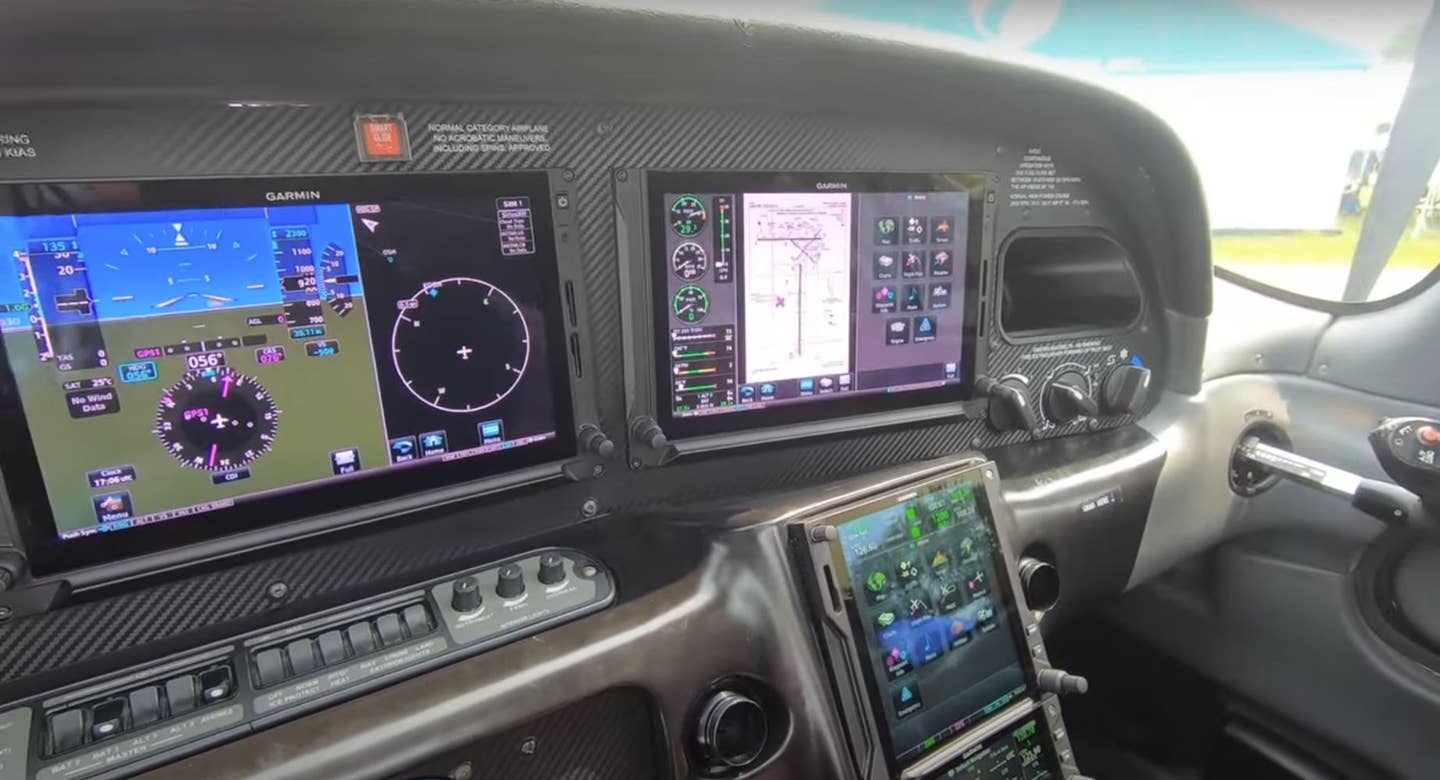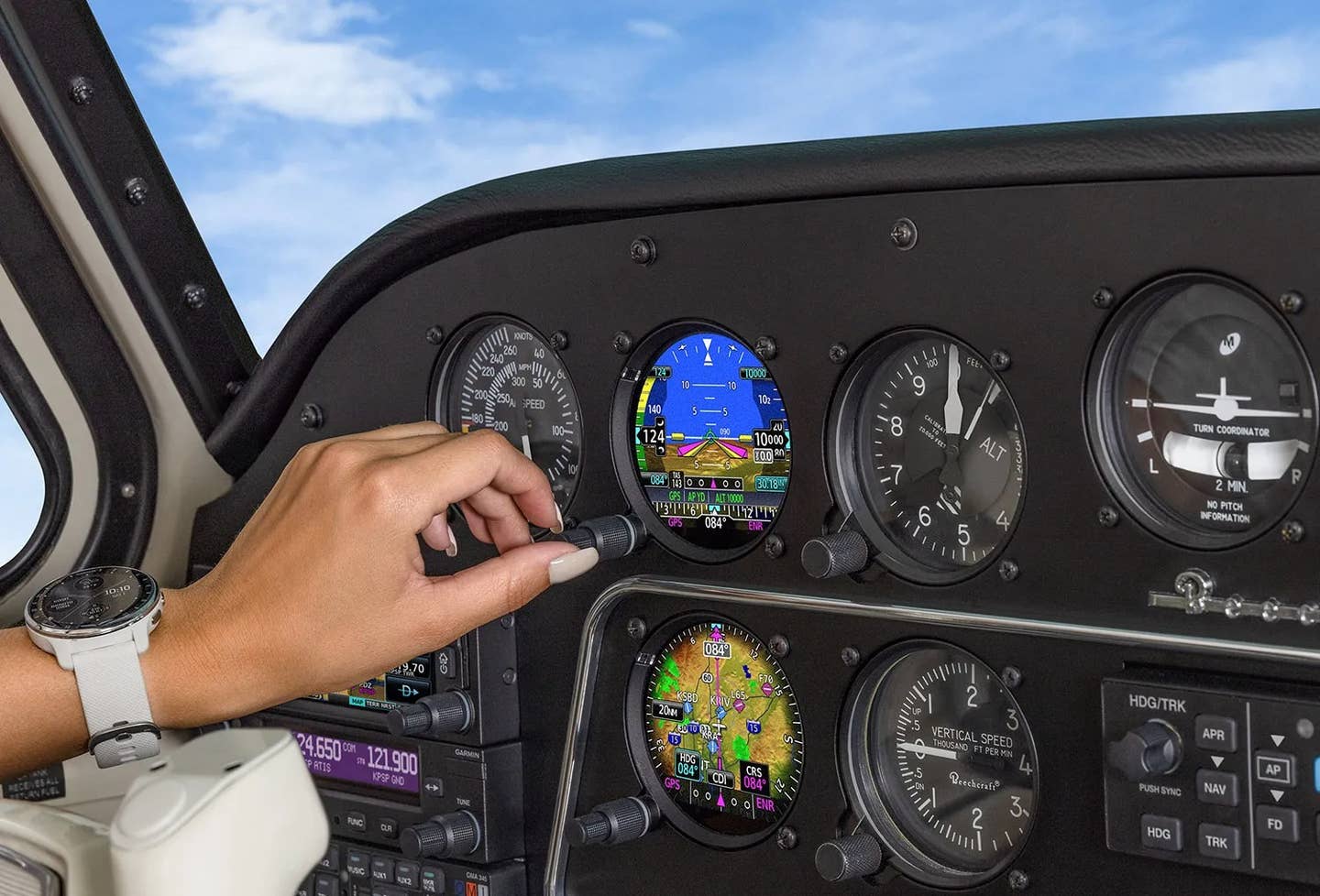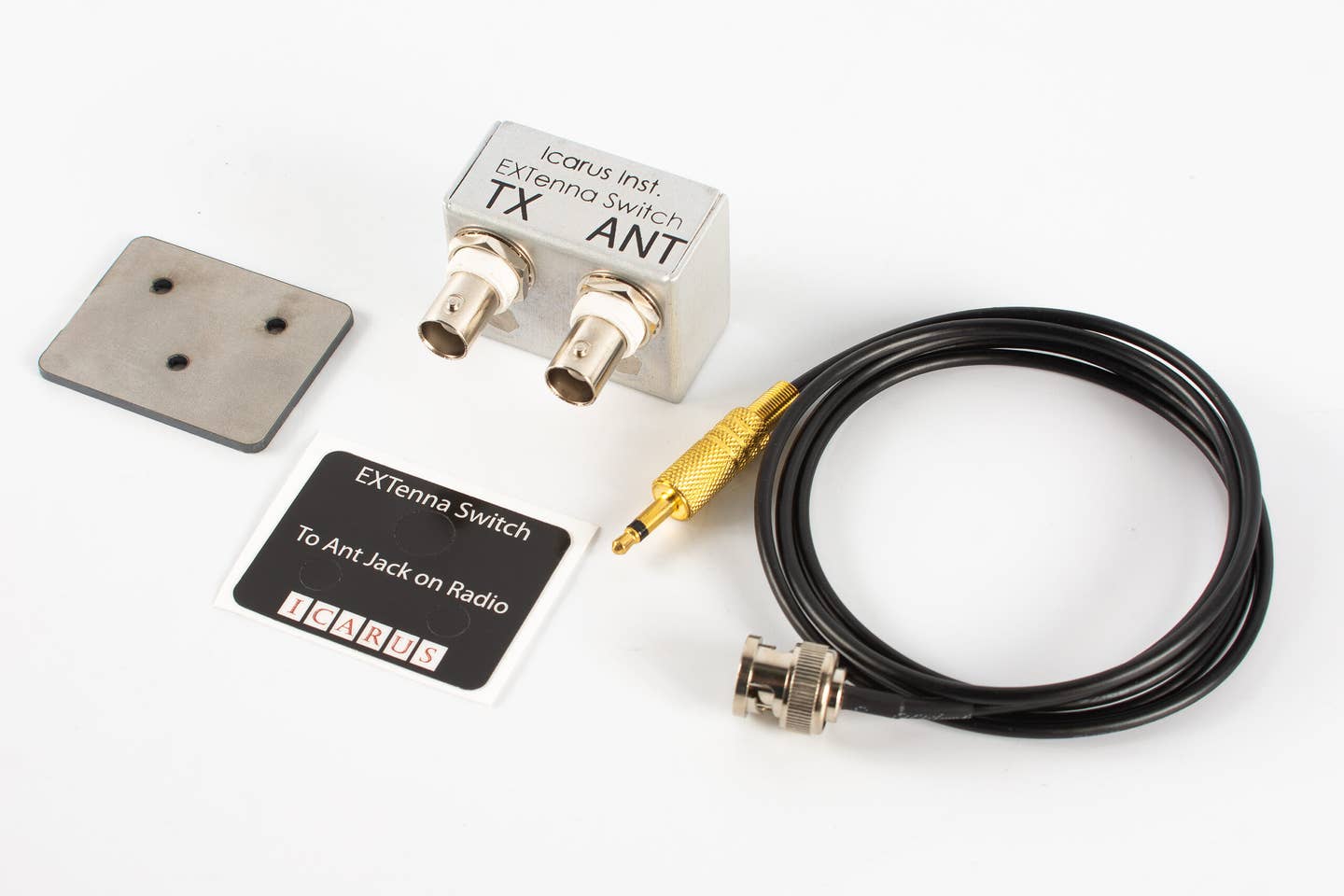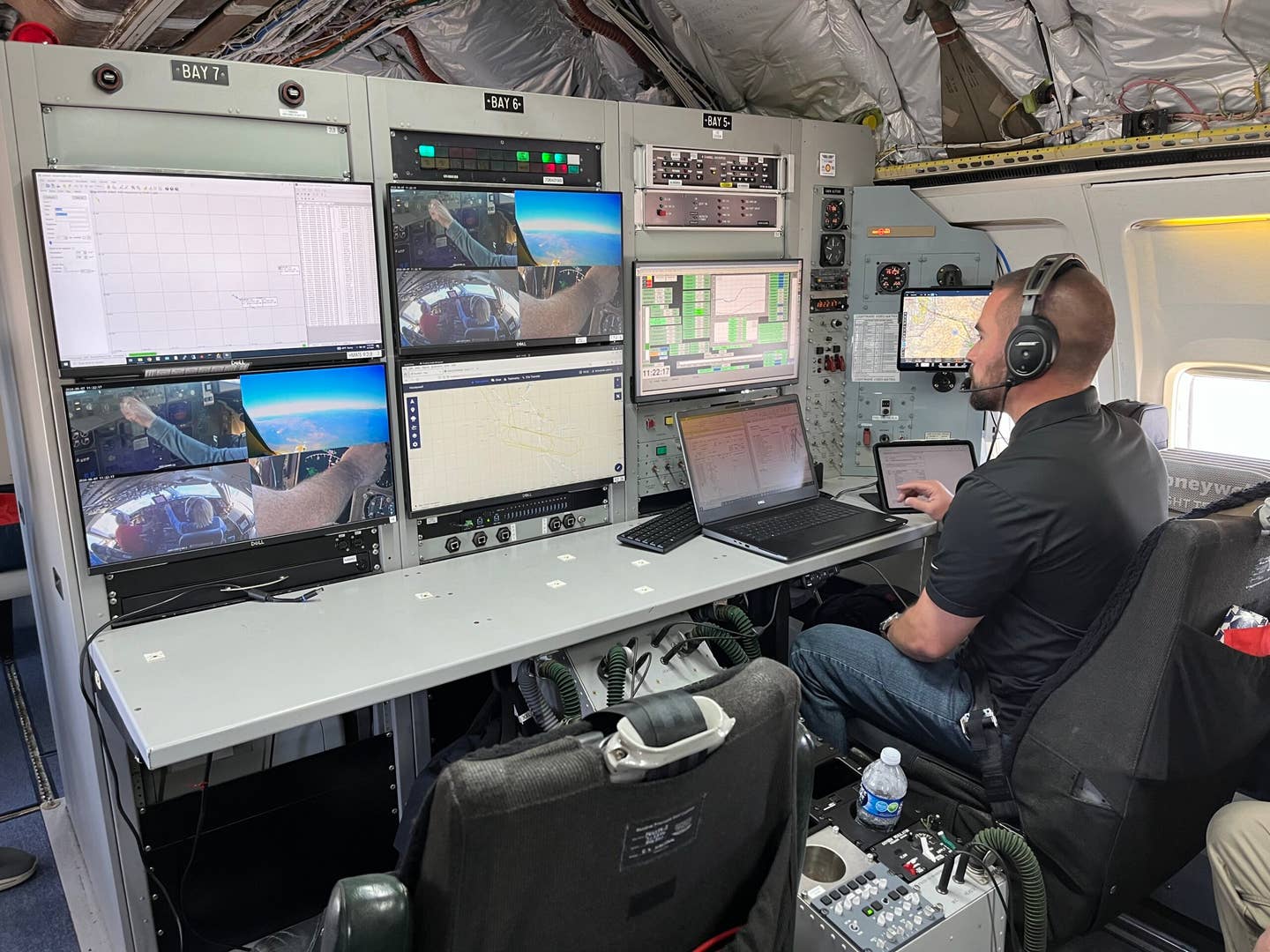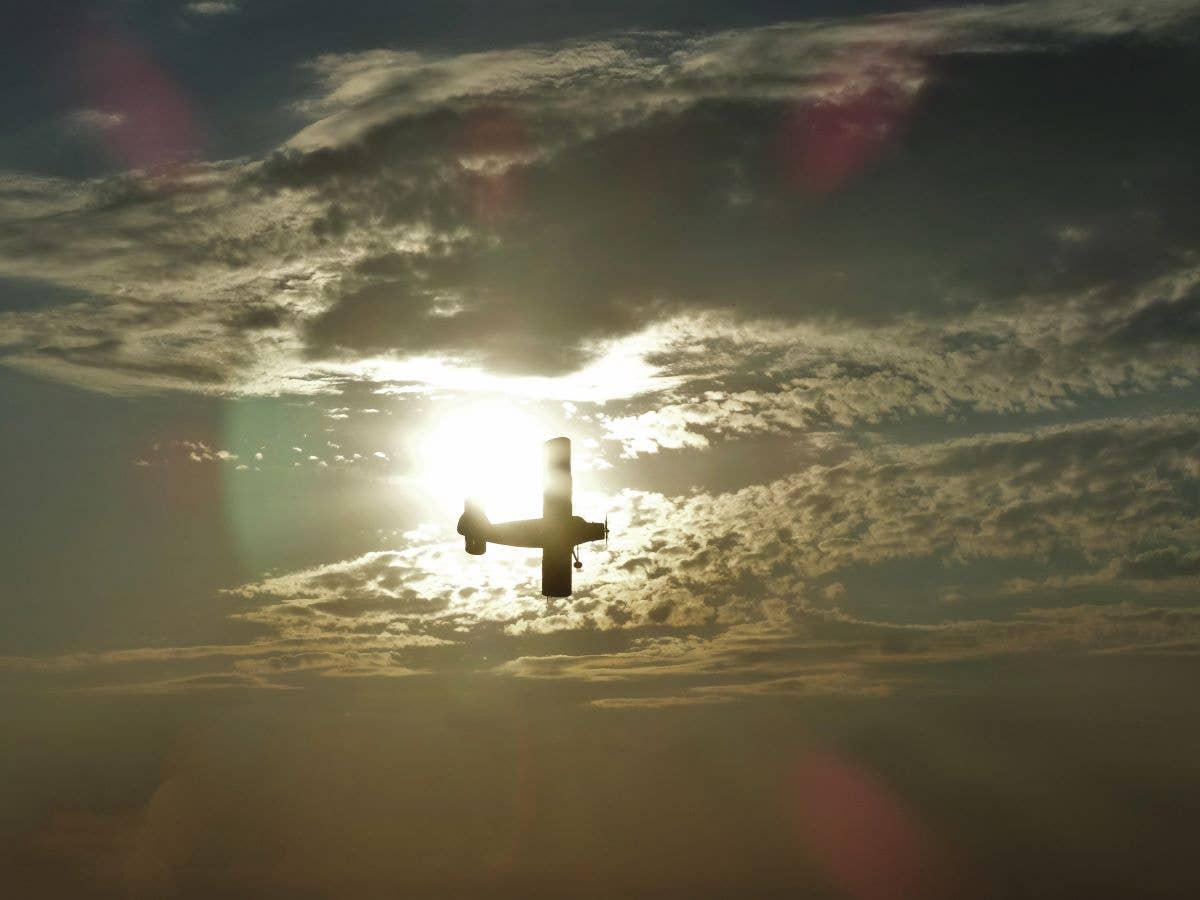Avionics Upgrades Go a Long Way
A number of fascinating technology updates have emerged in business aviation recently, particularly related to avionics.

Garmin announced in October that it acquired a supplemental type certification (STC) from the FAA for the GI 275 electronic flight instrument in the Dassault Falcon 7X business jet.
[Courtesy: Dassault Aviation]
Garmin’s announcement in October that it acquired a supplemental type certification (STC) from the FAA for the GI 275 electronic flight instrument in the Dassault Falcon 7X business jet should give operators and pilots a reason to celebrate. The announcement came as part of Garmin’s press run at the National Business Aviation Association’s Business Aviation Convention and Exhibition (NBAA-BACE) held in Orlando in October 2022, and it was one of many fascinating updates in business aviation, particularly related to avionics.
If you're not already a subscriber, what are you waiting for? Subscribe today to get the issue as soon as it is released in either Print or Digital formats.
Subscribe NowGarmin GI 275/Dassault Falcon 7X
Garmin's GI 275 can now replace the original secondary flight display in the Falcon 7X and be configured to serve as an attitude-direction indicator with synthetic vision technology. When Garmin introduced the GI 275 in January 2020, it seemed the powerful little round dial with all of Garmin’s software stuffed inside was positioned to corner the general aviation avionics market. If you’ve seen or used it, you know it.
The 3.125-inch, panel-mount digital gauge can do the work of four separate analog instruments, with pilots having the option to choose the configuration they want. So, with the ability to display primary flight and engine information, matched with FAA approval for installation in more than 1,000 single-engine and multiengine business and general aircraft models, owners could give their panels a facelift and keep some of those old birds flying a little bit longer.
In the case of the Falcon 7X, Garmin said 300 aircraft across the global Falcon fleet were eligible to add the GI 275. Either way, this recent addition shows just how capable the instrument is, if it can serve both weekend warriors doing breakfast runs in, say, a 1983 Piper Turbo Arrow IV—as I’ve seen—to now Falcon jet drivers, possibly taking the boss into Teterboro for a critical meeting.
Is that a coincidence? Not really. Jim Alpiser, who leads the aftermarket sales team for Garmin’s aviation segment, shared with FLYING that Garmin has in mind all the use cases, from big airplanes to small, when it designs and rolls out versatile products like the GI 275. “The person installing it in a Bonanza or a Mooney should feel amazing because that same technology is also inside a Falcon aircraft now,” he said.
It doesn’t mean some larger screen products, such as the G1000, will lose their place in the market. Instead, Alpiser uses the analogy of the suite of Apple products that share similar basic capabilities regardless of screen sizes. In this case, it’s more about what’s visually appealing to the pilots, and, like the Falcon 7X application, it could even augment the larger displays.
Garmin G5000/Cessna Citation Excel
In addition to the announcement on the GI 275, Garmin also said it was working with European regulators to gain permission for EASA-certificated operators to install the G5000 integrated avionics suite on the Cessna Citation Excel and Citation XLS. Since Garmin launched the Cessna Citation Excel and Citation XLS G5000 modernization program three years ago, more than 100 Excel and XLS aircraft have added the avionics package, and now European operators will benefit once the integration is approved. The three landscape-oriented displays give pilots added situational awareness and additional capabilities.
Finally, Piper Aircraft, which also exhibited at the conference, shared an update to say that the touchscreen Garmin G3000 and the software innovation for that avionics suite featured in Piper’s flagship M600/SLS was a big boost for safety. Some of the latest G3000 upgrades in the M600/SLS include enhancements to the synthetic vision system, weather radar, navigation, flight planning, checklists, and SafeTaxi. Though the G3000 isn’t available commercially for retrofits, Piper’s confirmation is a testament to the role of advanced avionics in improving both the lifetime and ease of operation for these airplanes.
Even the new HondaJet Elite II, which the OEM announced that same week, boasted the updated G3000 would be equipped with autothrottles. To that end, the new model would have Garmin’s emergency system, Autoland, as a standard feature when it ships.
It speaks to the bigger trend at play. When the Aircraft Electronics Association shared its six-month Avionics Market Report in August, it said owners and operators spent more than $615 million on retrofits, including flight deck upgrades and other electronics, antennas, and so forth. That represented more than 45 percent of all the avionic sales it recorded, compiled with data from more than 1,300 member companies.
That means aircraft owners and operators are finding new ways to stretch the lifetime of their aircraft by tapping into these avionics upgrades. That’s easier to do than airframe or powerplant upgrades, since those technologies progress much slower and suffer from more restrictions.
As Alpiser explained, “avionics upgrade technology has accelerated over the recent decades. In regards to the GI 275, it embodies that spirit because it packs many capabilities into a smaller space.”
Moreover, pilots now have an added layer of safety that comes from the reduced workload Alpiser says these upgrades offer. “Adding safety to the cockpit is a huge driver of upgrades and modernization. Adding safety-enhancing technology, like synthetic vision or additional data fields, can help make you a better pilot.”
Atlas, From Avidyne
Other legacy jet platforms are also being rejuvenated through avionic offerings from Avidyne. During NBAA-BACE, Avidyne shared that Learjet 55C owners and operators could now add Avidyne’s dual Atlas flight management system retrofit upgrade. The upgrade provides them with fully-coupled GPS approach capabilities, including LPV, LP, LNAV/VNAV, and LNAV-only, while not needing to make expensive EFIS86-L system replacements.
So, not only does it extend the useful life of these time-tested jets, but for operators, their world just got bigger.
“A lot of these airplanes are perfectly good airplanes,” Tom Harper, Avidyne’s marketing director ,tells FLYING. “With LPV, you’re opening up so many more runways, since that’ll allow you to get into airports that don’t have an ILS. Or, in some cases, they only have an ILS on one runway, and the winds aren’t favorable. So, the upgrade just gives you more options to complete the mission.”
In terms of use, each Atlas flight management system boasts a QWERTY-style keyboard with touchscreen capabilities so pilots can flight plan and view maps to their liking. They are also equipped with integrated wireless connectivity that links them to iPads to complement third-party flight planning apps.
Regarding the layout, Harper said the Learjet upgrade requires reconfiguring the center pedestal to make a more pilot-friendly interface by bringing EFIS mode select controls and FMS units forward.
Harper added that the upgrade to the Lear 55C is just an indication of things to come. Avidyne will look to breathe new life into other “old birds,” including others in the Learjet family, Dassault Falcons, Cessna Citations, Beechcraft King Airs, the IAI Westwind, and the Piaggio P.180 Avanti.
This article was originally published in the December 2022/January 2023 Issue 933 of FLYING.

Subscribe to Our Newsletter
Get the latest FLYING stories delivered directly to your inbox


